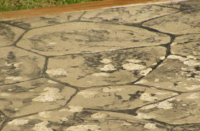 Use our concrete calculator to quickly calculate your concrete pours. Enter the length, width and thickness or height to find the number of cubic feet, yards or meters or bags of concrete needed for your project. You can also calculate home, column or round concrete footings as well as circular concrete slabs or tubes. Once you have your amounts, you can give them to your ready-mix provider. You could also give them to the person purchasing your bags and you will be ready to pour!
Use our concrete calculator to quickly calculate your concrete pours. Enter the length, width and thickness or height to find the number of cubic feet, yards or meters or bags of concrete needed for your project. You can also calculate home, column or round concrete footings as well as circular concrete slabs or tubes. Once you have your amounts, you can give them to your ready-mix provider. You could also give them to the person purchasing your bags and you will be ready to pour!












